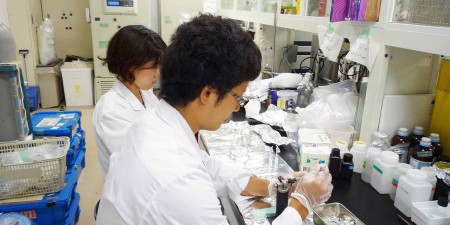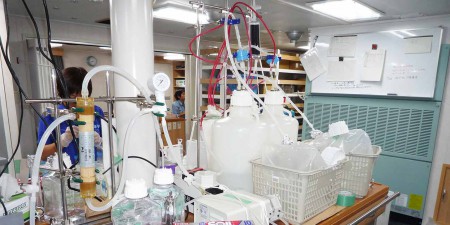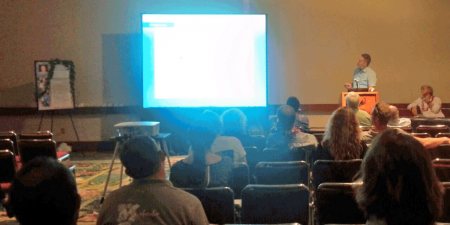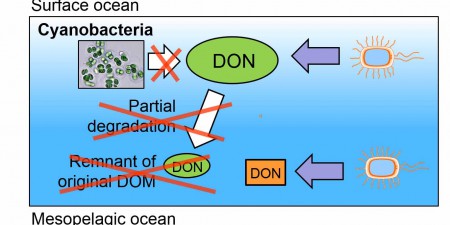My Research : Production and dissolution of colloidal biogenic silica in the ocean – D2 Koji Kiyama
In the marine ecosystem, diatom, which utilize silicon essentially to construct their cell walls, are the most important primary producer and play a major role in the downward export of organic carbon from the euphotic zone. Their debris preserved in the euphotic zone contributes to the understanding of the silicon cycle and also for understanding the impact of carbon on global climate change.
Biogenic silica (BSi) is produced by diatom mainly. BSi is important among the biogeochemical cycle for it is easy to dissolve as compared with the lithogenic silica. ther dissolution was thought to be controlled by physical and chemical processes. If so, BSi is supposed to disappear size becomes smaller, but colloidal fraction BSi (CBSi) has been discovered. I indicated that CBSi is produced by dissolution of Particle BSi (PBSi). In the case of the BSi dissolution experiment, the approximately 70% of the CBSi was dissolved in 12 days, but some CBSi undissolved after 30 days.
Thus, it may be characterized by refractory BSi. The amino acid is increased approximately 10-80% by performing the treatment with alkaline solution. This suggests that the amino acid has been protected by the BSi. Future research is needed to BSi is how it works for the organic matter in the ocean.
(D2 Koji Kiyama)
Preparation for experiments
Experiment apparatus



